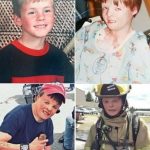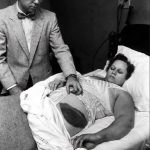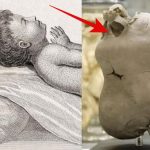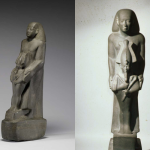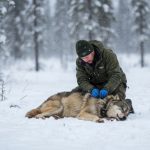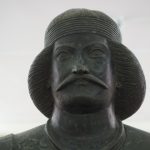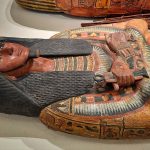The Weight of a Name

Related Videos:
The air in Dachau, 1945, was thick with the scent of liberation and the lingering stench of unspeakable horror. The barbed wire fences, once formidable symbols of oppression, now lay broken, but the invisible cages of trauma still held many captive.

In the chaotic aftermath, amidst the shouts of joy and the tears of relief, a lone figure stood out. He was little more than bone and shadow, his skin stretched taut over a skeletal frame. His eyes, though wide open, seemed to gaze beyond the present, holding the haunted echoes of unspeakable suffering. This photograph captures a survivor—a man whose spirit had endured an inferno.

An Allied soldier, his face etched with a mixture of triumph and profound sorrow, approached the emaciated man. The soldier, perhaps seeing his own humanity reflected in the survivor’s vacant stare, gently draped a heavy, warm coat over the man’s shoulders. It was a simple act of human kindness, a gesture meant to restore comfort, warmth, and a semblance of dignity.
The survivor, his movements slow and deliberate, felt the unfamiliar weight of the fabric. It was soft, unlike the coarse, striped uniforms that had become his second skin. He looked at the soldier, his voice a raspy whisper, barely audible above the sounds of the liberated camp.

“Does it… does it come with a name?” he asked.
The soldier paused, confused. He might have expected a thank you, perhaps a question about food or freedom. But a name? He stammered, “No, it’s… it’s just a coat, sir. From our supplies.”
But the survivor’s question wasn’t about the coat. It was a cry from the depths of a soul that had been systematically, brutally dehumanized. For years, he had been stripped of his identity, his given name replaced by a tattooed number. He was not a man; he was a unit of labor, an object, a statistic in a vast, murderous machine. His wife’s face, his children’s laughter, the streets of his hometown—all had faded into the background as he struggled simply to exist.

His question was a poignant, heartbreaking plea for the return of his personhood, a desperate reaching for recognition as an individual. He wasn’t asking for the coat’s label; he was asking if the act of receiving it came with the implicit understanding that he was once again a human being with a unique identity, a history, a family, and a future.
That simple, profound query laid bare the deep psychological toll of the Holocaust. It highlighted how the true cruelty of such atrocities wasn’t just the physical torment, but the systematic attempt to erase the very essence of what it meant to be human.

The soldier, understanding dawning in his eyes, knelt down. “What is your name, sir?” he asked gently.
And in that moment, as the survivor uttered a name he hadn’t spoken aloud in years, a tiny spark ignited in his eyes. The coat was just fabric, but the name—that was the first thread in the long, arduous process of weaving himself back into existence. His question became a powerful testament to the enduring human need for identity, a testament that even after the darkest night, the spirit yearns to be called by its true name.


